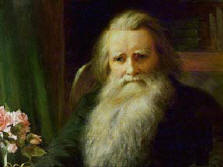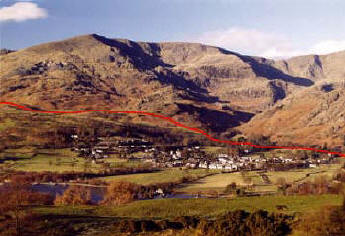|
THE RUSKIN MUSEUM
|
||||||||||||||||
|
A bitter dispute as to ownership and rights to operate, has broken out and is still unresolved at time of writing (25-01-2023). We are sure all fans of Bluebird land and water speed record vehicles, will be pleased to see the K7, above, running again on water. As many readers will know, Bill Smith has spent 15 years of his life restoring the jet powered Bluebird, the passion of Donald Campbell, until he pushed the design too far in 1967. Despite agreement as to operational rights, the Ruskin Museum in Cumbria is now seeking to default on that agreement, without offering Mr Smith compensation for his fifteen years of project management and time spent actually working on the fated hydroplane. This might seem like a one off dispute, until you look back in time at the various disputes between Sir Malcolm Campbell and Rolls-Royce, Donald Campbell and Ken Norris, and Don Wales and the designer/builder of the Bluebird Electric racing cars. Taken in that context, the present dispute is just another in a chain, that seems to have passed down the family as an embedded DNA profile. Of course that is just speculation, whereas the history of disputes is indisputable. When it comes to paying, just like the addiction to speed, it seems to run in the family, allegedly.
CONISTON, CUMBRIA
John Ruskin (1819-1900) was a great Victorian artist, critic, teacher, writer, amateur geologist and philosopher. His range of interests and achievements were staggering. He thought that it was fundamental to make links between subjects and disciplines. He generally managed to see the whole picture. Ruskin's 39 volumes contains some 9 million words. His correspondence ran to 20,000 letters. His sketches, drawings and paintings also run into the thousands. It is fitting that the Museum at Coniston should be so dedicated.
John Ruskin
There has been a Ruskin Museum in Coniston since 1901, when W.G. Collingwood, a local artist and antiquarian who had been Ruskin's secretary, set it up both as a memorial to Ruskin and a celebration of the area's heritage. For this reason the museum has a Ruskin collection, to include exhibits relating to the copper-mines, slate, geology, lace, farming and Donald Campbell.
The museum was extended in 1999 with the help of a Heritage Lottery grant; additional building with modern design-work, computer displays, and hands-on exhibits have transformed the look of the two galleries.
CUMBRIAN GEOLOGY
Geologists and walkers will find the variation in rock types an interesting feature of the hills. Coniston has two totally different rock groups represented in the area. The geology of the Coniston area is best viewed from Grizedale Forest, which is to the east of Coniston.
volcanic & sedimentary rocks
The terrain from the forest to west of Coniston consists of wooded, agricultural land, with gentle rolling hills of relatively low relief. The rocks underlying this area are marine sedimentary rocks from the "Windermere Supergroup". Volcanic rocks of the Coniston Fells were laid down around 460 million years ago. They are part of the rock group known as the Borrowdale Volcanic Group (BVG). The total thickness of the BVG laid down in the Lake District is over 7km thick, an incredible deposit.
Due to the collision of two continents some 420 million years ago the rocks have been intensely heated and squeezed. They have also been uplifted and now the once horizontal beds dip roughly south east at up to 90 degrees. You can literally walk back in geological time, this is because as you walk up the coppermines valley, the rocks get older the further you walk.
The other major event that affected the area in a big way happened about 2 million years ago. This was the start of the ice age. Successive glaciations carved out the valleys and scooped out hollows where now tarns such as Low Water and Blind Tarn are. This mountain and valley terrain is what makes the Lake District so special.
After the volcanic period the area subsided beneath the sea. In sub-tropical shallow waters teaming with marine life, the Coniston Limestone was laid down. This was not the limestone frequently seen from the Carboniferous period but a less pure limestone from the much earlier Ordovician. Slowly the sea deepened and over a long time period large amounts of muds and sands were deposited. These are the Windermere Supergroup sediments that are also of great thickness.
Bluebird Recovery
On Thursday 8th March 2001 Bluebird was recovered from Coniston Water where she had lain since the 4th of January 1967. Although a lot of local people and many members of the Campbell family did not want the boat recovered from the lake, once it had been, most accepted it and moved on. The hope was that it would be returned to Coniston some time in the future. The Museum has many framed photographs showing the recovery of Bluebird by Bill Smith and his team.
The K7 wreckage recovered 8 March 2001
The Museum was granted planning permission on 3rd July 2003 to build a "Campbell Gallery" extension. It is expected that when the boat is restored it will be housed in this extension along with a display of memorabilia and computer displays. Sir Malcolm Campbell's Bluebird boat, the K3, is intact and housed at the other end of the country at Filching Manor Motor Museum, near Polegate in East Sussex. The K3 was rescued from ruin privately by Paul Faulkes-Halbard. The K3 restoration continues and we hope to feature progress in the near future.
Ruskin
Museum
www.ruskinmuseum.com
Admission:
Adults £3.50 Child £1.75 Family £9.00 (2 adults + 2 or 3 children) Open Daily - 10.00am to 5.30pm
|
||||||||||||||||
|
This
website is Copyright © 2023 Bluebird Marine Systems Limited.
The names Bluebird™ and the blue bird in flight
|
||||||||||||||||
|
|

